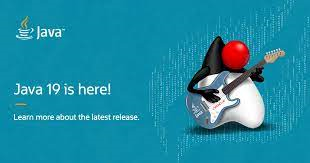The Complete Responsive CMS Blog created by Francesco Malagrino

Pattern Matching for Switch:
Category: Java & Written by Francesco Malagrino On May-31-2023 12:24:03
Introduction:
Java, the widely-used programming language, has been continuously evolving to meet the ever-changing demands of modern software development. With the release of Java 19, a highly anticipated feature called "Pattern Matching for Switch" is introduced. This feature aims to enhance the switch statement, one of the core control flow constructs in Java, by incorporating pattern matching capabilities. In this blog post, we will delve into the exciting new world of Pattern Matching for Switch in Java 19 and explore its benefits and potential use cases.
Understanding Switch Statements in Java:
The switch statement in Java has long been used to control the flow of execution based on different values of a single variable. Traditionally, switch statements allowed developers to match against constant values using the "case" keyword. However, this approach had limitations when dealing with more complex scenarios where pattern matching was required. Developers had to resort to using if-else statements or other workarounds to achieve the desired functionality.
Introducing Pattern Matching for Switch:
Pattern Matching for Switch is a significant enhancement to the switch statement, empowering developers to match complex patterns in a concise and expressive manner. It allows for matching against different patterns, such as type patterns, value patterns, and combination patterns, enabling more powerful control flow.
Type Patterns:
With type patterns, developers can now match against the type of an expression directly in the switch statement. This eliminates the need for explicit casting and improves the readability of the code. Type patterns enable developers to handle different cases based on the type of an object, making it easier to perform actions specific to a particular type.
Value Patterns:
Value patterns enable matching against specific values or ranges of values within the switch statement. This feature simplifies the code by removing the need for multiple if-else conditions. For example, developers can match against ranges of numbers or specific strings without resorting to complex logical conditions.
Combination Patterns:
Pattern Matching for Switch also allows for combining multiple patterns using logical operators such as "and," "or," and "not." This feature enhances the flexibility and expressiveness of the switch statement, enabling developers to handle complex scenarios with ease.
Benefits and Use Cases:
Pattern Matching for Switch brings several benefits to Java developers. It enhances the readability of code by eliminating the need for boilerplate code and reducing the cognitive load associated with complex control flow. The improved expressiveness enables developers to write concise and maintainable code, leading to increased productivity.
There are various use cases where Pattern Matching for Switch can shine. For instance, it simplifies code dealing with different types of objects or hierarchies, such as handling different subclasses based on their types. It also enhances the handling of enumerations, allowing developers to perform actions specific to different enum values directly within the switch statement.
Conclusion:
Pattern Matching for Switch is a game-changing feature introduced in Java 19, enhancing the switch statement with powerful pattern matching capabilities. With its ability to match against type patterns, value patterns, and combination patterns, it offers developers a more expressive and concise way to handle complex control flow scenarios. By eliminating boilerplate code and enhancing readability, Pattern Matching for Switch improves code maintainability and productivity. As Java continues to evolve, this feature provides developers with a valuable tool to tackle challenging programming scenarios.
Share
Comments

Categories
Recent Posts


Deep Dive into REST: Understanding RESTful APIs and Best Practices
June-06-2023 21:30:26

Exploring the Sealed Classes
June-06-2023 21:07:07

Pattern Matching for Switch:
May-31-2023 12:24:03

Exploring the Exciting Features of Java 19
May-29-2023 23:45:46